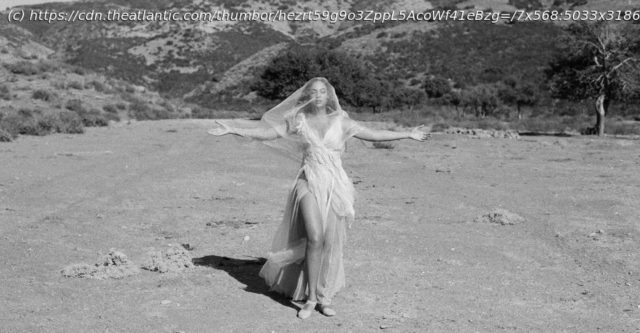The artist’s film for Disney+ returns to the themes of home and exile that animated her past two visual projects—and that hold special meaning for Black Americans.
In recent years, Beyoncé has prefaced her musical homecomings with a glimpse of the final destination. She released the song “Formation” well ahead of her 2016 visual album, Lemonade, which contained lessons in ballads and rock anthems alike about how to go through despair and return to oneself again. Though it debuted early, “Formation” serves as the record’s final track and credits music, announcing a new beginning for Beyoncé and an end to heartbreak in its many forms. Similarly, the song “Black Parade” debuted this year on Juneteenth but plays at the end of Black Is King, Beyoncé’s visual project released on Disney+ last month. With a playful burst of trumpets and bass, the song is a departure from the Afrobeat and South African house music that give the album its collaborative, diasporic feel. Between Black Is King and Lemonade was the 2019 concert film Homecoming, which celebrated the marching-band traditions of historically Black colleges and universities in the American South. Together, these works comprise a trilogy of Beyoncé’s sonic and visual teachings about ideas of home and exile, and the particular meaning they hold for Black Americans. The final installment in this unofficial trilogy, Black Is King is the most joyful and epic journey of the three. A follow-up to the 2019 soundtrack that Beyoncé curated for The Lion King, the film has been acclaimed for its vivid portrait of Black diasporic beauty—and is best understood by first diving deep into the specifics of the visual story it tells. The film opens with a bird’s-eye view of a basket floating down a river. Beyoncé first appears alone at the water’s edge dressed in flowing white, but in the next scene, she’s cradling a baby. She joins other Black mothers in a ritual blessing of newborns; with this, the women symbolically hand the infants a legacy that will guide them into the world. By the end of the sequence, the baby has grown into a young boy, a human stand-in for the lion cub Simba. As his guide, Beyoncé readies him for a journey into his own history that will prepare him to become king. Viewers are reminded repeatedly in song, prose, and images that Blackness is inherently regal, even divine. As the film’s narrator and central figure, Beyoncé is opulently adorned, and so is everyone else on-screen. In a monologue about beauty, Beyoncé declares, “Black is king.” In another scene, a woman proclaims, “I can’t say I believe in God and call myself a child of God, and then not see myself as a god.” The production of Black Is King primarily employed African musicians, dancers, choreographers, and designers, and it is their work that helps shape Beyoncé’s vision of a universal Black home.






